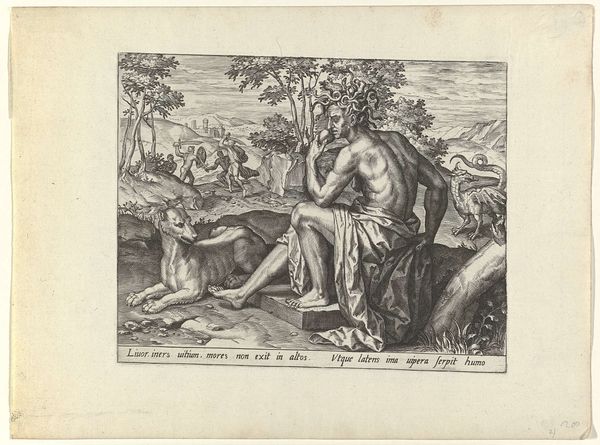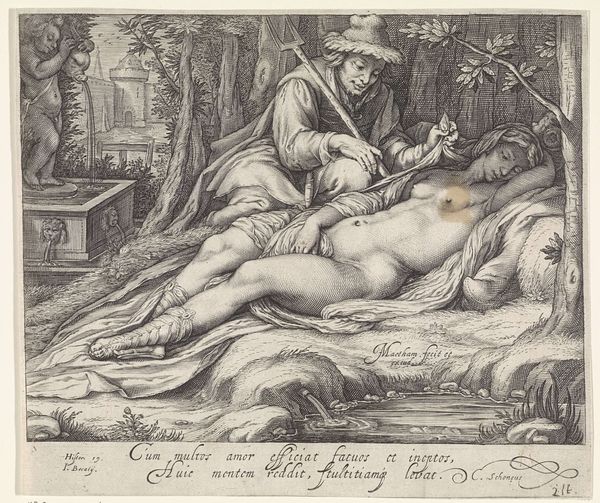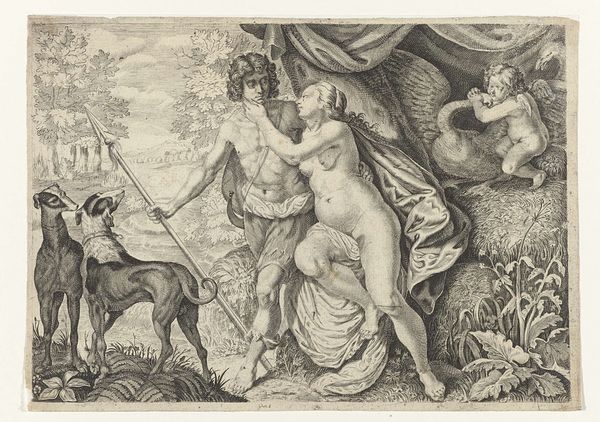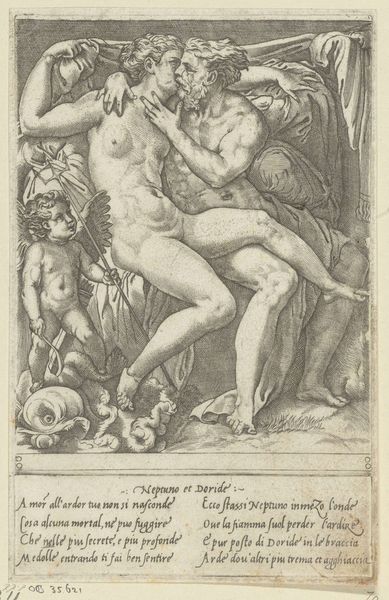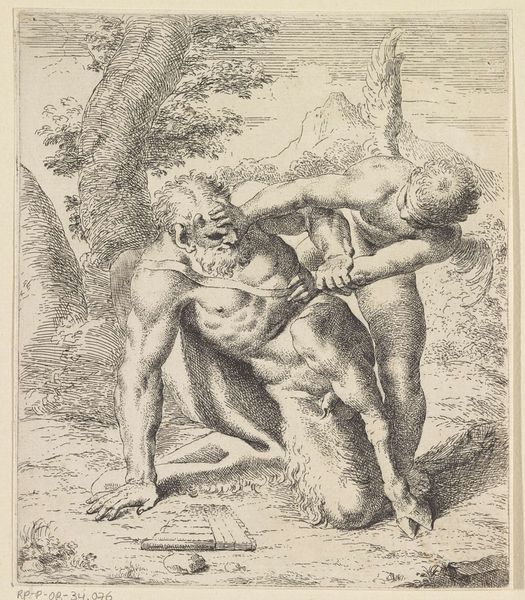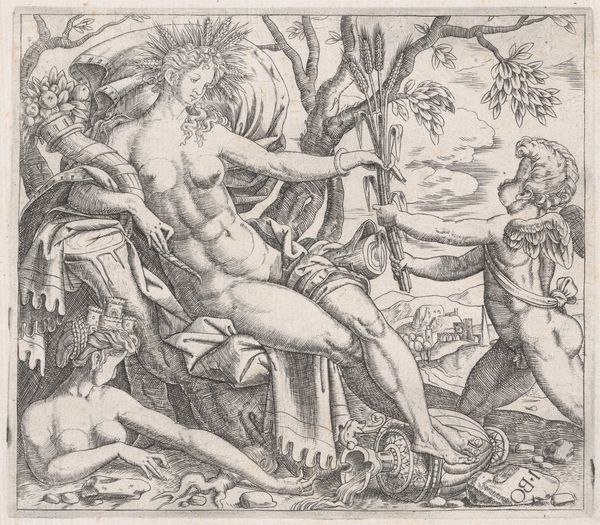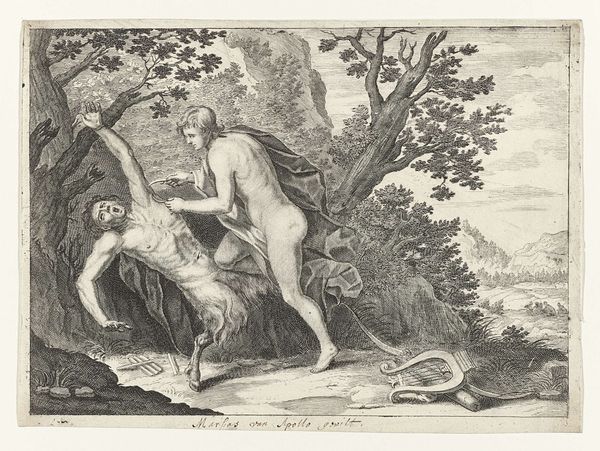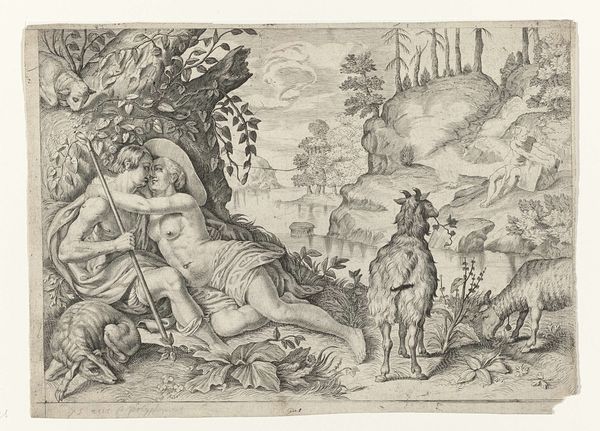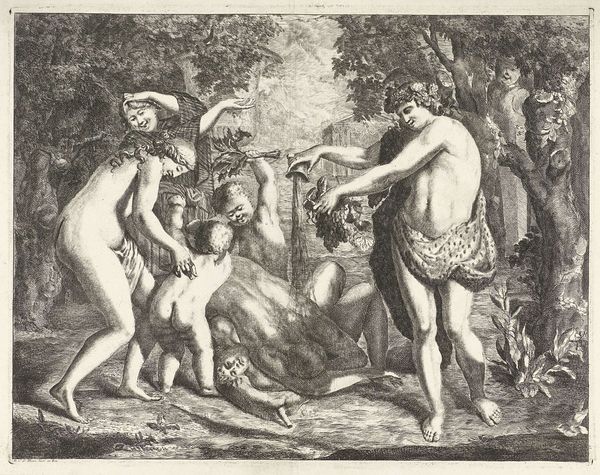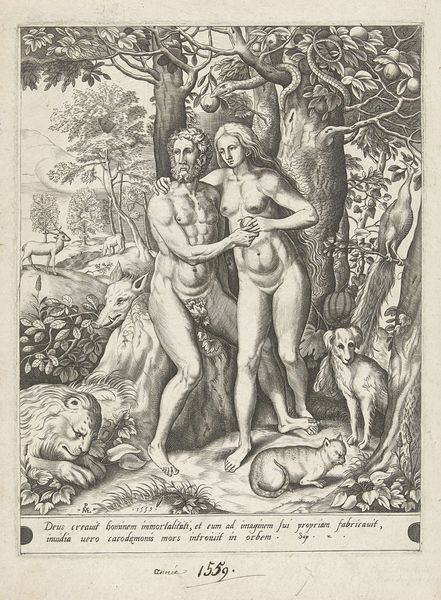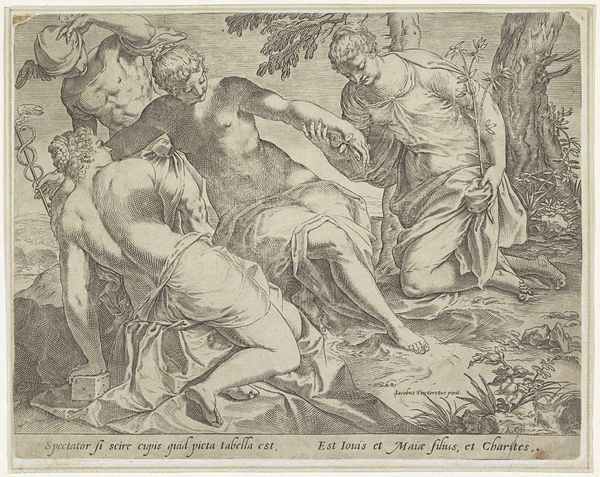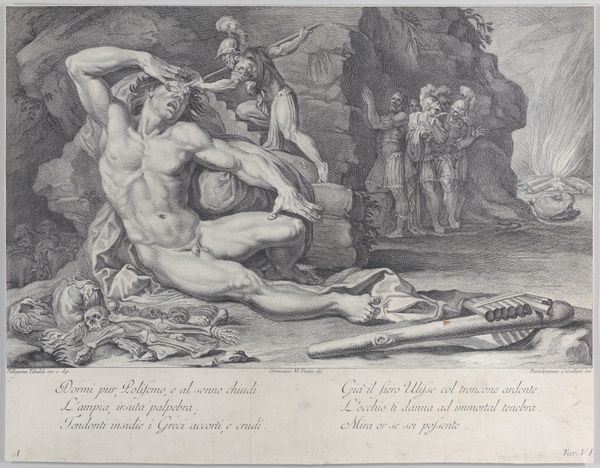
engraving
#
narrative-art
#
baroque
#
figuration
#
history-painting
#
engraving
Dimensions: width 289 mm, height 209 mm
Copyright: Rijks Museum: Open Domain
Editor: This is "The Good Samaritan," an engraving by Nicolaes van Geelkercken from 1615, currently at the Rijksmuseum. The stark contrast between light and shadow makes the scene very dramatic. What story does it tell, or better, how should we read it today? Curator: That contrast is key. It’s a hallmark of Baroque style, but it also heightens the emotional impact of the parable. Think about the context: early 17th-century Netherlands, emerging from religious conflict. This image is about more than just charity. Editor: How so? Curator: Well, consider the figure of the Samaritan. In that time, they were often considered outsiders. So, this work, rooted in Christian ethics, pushes back against the treatment of outsiders in Dutch society by saying that one is to treat one's neighbor how one wants to be treated. It speaks to social responsibility across difference. The visual composition almost romanticizes it, don't you think? A lone man caring for a body amidst a forest—where have we heard of something like this before? Editor: You mean, like Jesus after his crucifixion? That's pretty potent. Curator: Exactly. Geelkercken seems to be actively positioning this Good Samaritan as a Christ-like figure. What this pushes forward, at least for me, is a social responsibility beyond traditional views, towards caring for vulnerable members within one's community, including "outsiders." Editor: It's incredible how a single image can speak to so much history and meaning. I’ll never look at it the same way again. Curator: And hopefully, that new perspective sparks conversations about who our neighbors are and how we can assist them in our current societal landscape.
Comments
No comments
Be the first to comment and join the conversation on the ultimate creative platform.
